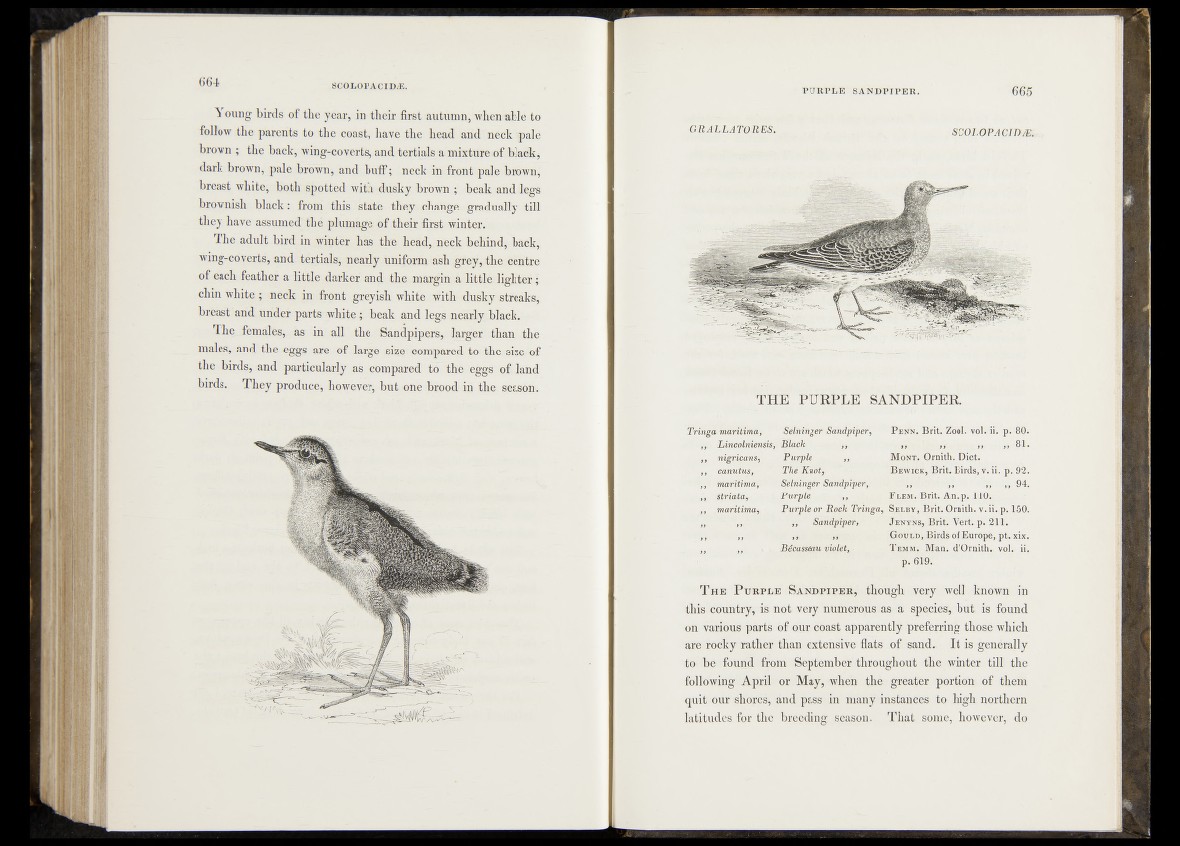
Young birds of the year, in their first autumn, when able to
follow the parents to the coast, have the head and neck pale
brown ; the back, wing-coverts, and tertials a mixture of black,
dark brown, pale brown, and buff; neck in front pale brown,
breast white, both spotted with dusky brown ; beak and legs
brownish black: from this state they change gradually till
they have assumed~the plumage of their first winter.
The adult bird in winter has the head, neck behind, back,
wing-coverts, and-tertials, nearly uniform ash grey, the centre
of each feather a little darker and the margin a little lighter;
chin white; neck in front greyish white with dusky streaks;
breast and under parts white; beak and legs nearly black.
The females, as in all the Sandpipers, larger than the
males, and the eggs are of large size compared to the;size of
the birds, and particularly as compared to the eggs of land
birds. They produce, however, but one brood in the season.
g u a l l a t o b .e s . SC O L O P A C IDÆ .
T H E PU R P L E SA N D P IPER .
Tringd maritima, Sèttórigër\Sandpipêh\ '1 1
Lincolniensis, Black , ,
I nigricaps, Purple t ,,
I < unutus, The Knot',
maritima“,^ > SèjMngèr Smidpiper1,
striata, ^Purple,l-A.U
.maritirpa, Purple or Rock Tringa,
,, ,, Sandpiper,
. , Bécasseau violet,
Pen1n. Brit. Zool. voF.4r^pÄK).
. . . . . . . . 81.
Ornith. Diet. I
«92.
94.
150.1
BfiW.icfe-jfpnt.' Birds, pft|. p
Flem. Brit. Aj^.
S lt.by, Brit. Ornith. v. ii. p
J enyns, Brit. vert. p. 2 m 1
^oiii|D, Birds of Europe, pt.
T emm. Man. .d’Ornith. vol
T h e P u r p l e S a n d p i p e r , though very well known in
■ =^bis>* -:c#utM&c^|L-.d^» -itogEfe numerous as a species; but is found
on various parts of our coast apparently preferring those which
are rocky "rather than extehsifeflats ilpsand. It is- generally
September throughout the winter till- the
following April or May, when the greater portion of them
quit our shores; ;and pass in manytiostanee& to high northern
latitudes for t®®breeding season. That some, however, do